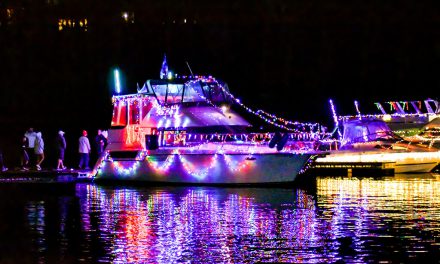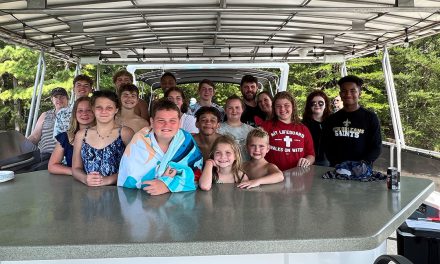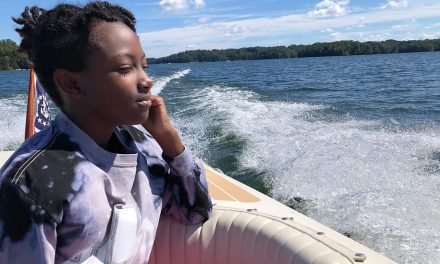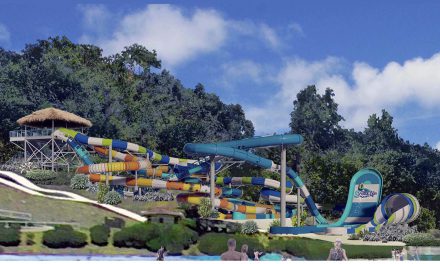In September, Lakeside News Senior Writer Pam Keene continued her international treks. On her most recent Overseas Adventure Travels trip, she and fellow travelers journeyed to Northern Greece, Albania and North Macedonia, through mountain terrain, seaside towns, ancient ruins and modern cities to learn about this little-known part of the planet. Here is her accounting of Northern Greece.
Unfamiliar lands: Northern Greece and the Balkans reveal their storied pasts
When I told people I was going to Northern Greece and the Balkans in early September, most said, “You’ll love the Greek islands,” “I’ve been to Athens and loved the Parthenon” or “What are the Balkans?” Rather than getting into a long explanation, I just smiled.
But here’s the “real” trip: Northern Greece, Albania and North Macedonia, entitled “Ancient Lands of Alexander the Great.” From Thessaloniki by the sea and the famed Mount Olympus to the holy site of Meteora and its cliff-top monasteries to the Albanian capital and a village to visit a family farm, then on to North Macedonia’s historic and ancient Lake Ohrid and the country’s thriving capital of Skopje, my 18-day adventure revealed far more about this part of the world than I ever anticipated.
Athens was just a memory from my previous trips because we didn’t go near the Greek capital. However, we were treated in the Greek way of kindness, friendship and passion for learning by our astute Trip Leader Ilias Pantazis, an Athens native who frequently travels to the U.S. At 32 years old, he’s been leading groups for more than seven years and has more energy than the Energizer Bunny.
Traveling with Ilias as our seasoned trip leader, we didn’t miss a thing. On our walk along the shore in Thessaloniki he pointed out the first of many Holocaust memorials we’d see for the next 18 days. He also shared personal stories about his family and how the Holocaust affected them, as well as how World War II factored into this amazing part of the world we were about to experience.
Thessaloniki, a major shipping port on the Thermaikos Gulf on the Aegean Sea, offers a view of Mount Olympus, in Greek mythology the home of the gods, where we would visit in a couple of days.
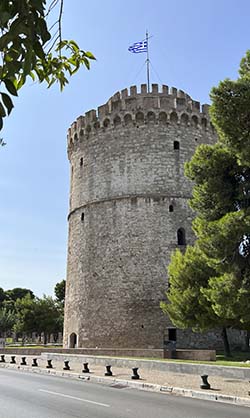
Thessaloniki’s White Tower was built in the 15th century after the city fell to the Ottomans in 1430.
Meanwhile, Thessaloniki’s history called. We met the hero of our adventure: a 20-foot statue of Alexander the Great mounted on his rearing horse, atop a 35-foot base. Created in 1973 by Greek sculptor Vangelis Moustakas, the statue itself weighs between four and five tons. Nearby, the city’s official symbol, the White Tower built in the 15th century, houses a museum of armor and armaments.
Thessaloniki’s Upper Town holds treasures of the ancient city, including several Orthodox Christian (i.e., Byzantine) churches, remnants of the centuries of war between the Orthodox Byzantines and the Muslims of the Ottoman Empire. Throughout our journey, we would hear of the conflicts between the two cultures, the Ottoman Empire (i.e., the Turks) eventually defeated the Byzantines, making way for the 400-year rule of the Ottoman Empire.
A visit to a former mosque-turned-monastery that’s still in use helped us understand why monks created elaborate paintings and frescoes of biblical and religious scenes embellished with gold. Because most people couldn’t read, these works of art told the stories; the shining gold added a spiritual and other-worldly sense to separate the mystical from the earthly.
No trip to this region would be complete without seeing Mount Olympus, the highest in the country. Among the most biodiverse in the world, it has nearly 1,700 species of flora, 32 types of mammals, more than 115 species of birds and 22 species of reptiles and amphibians. In 1938, it was made a National Park, the first in Greece, and now attracts thousands of visitors who hike, mountaineer and even snow ski on its peaks. Our group took a hike along one of the forested ravines.
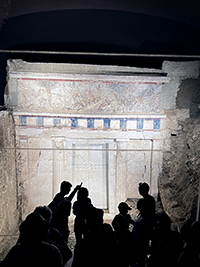
Visitors are silhouetted by the lighted facade of King Phillip II’s tomb in Vergina, Greece.
As we left Thessaloniki, we stopped at the Royal Tombs of Vergina, the final resting place of King Phillip II. Unearthed almost 40 years ago from beneath a man-made hill, the tombs from the fourth century BC are remarkably well preserved; the site includes a museum of relics from the Macedonian era.
Perhaps the highlight of our time in Northern Greece, the UNESCO World Heritage Site of Meteora was other-worldly. It’s the second-most visited site in Greece, after the Acropolis in Athens.
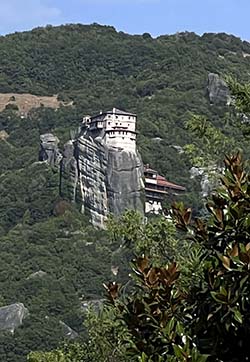
Several of the centuries-old monasteries, built atop high rocks in Meteora, are open to visitors on a rotating basis.
The mystery continues to baffle visitors about how the monks built 26 monasteries atop numerous towering rock formations that look like the surface of the moon. These elaborate sanctuaries appear to rise fully complete from the tops of the rocks. Today, only six survive, still occupied and maintained by the monks or nuns who live there in modern times.
We visited two of these incredible structures, accessible by climbing on trails and stairs. Both were filled with stunning colorful frescoes depicting the life of Christ and other biblical stories, plus dedicated worship areas. Built as far back as the 10th century, the stone structures were mind-boggling. Each stone was hoisted as high as 1,000 feet, carefully laid to join with massive beams that formed the walls and ceilings. Over the centuries, the resident monks have preserved the interiors as they appeared when first built, just as colorful and just as holy as they were hundreds of years ago.
It was difficult to leave this ethereal place, where, by the way, the 1981 James Bond film, “For Your Eyes Only,” was made.
As we continued toward the Albanian border, we stayed two nights in the Greek region of Zagoria’s Aristi village. Giving us a chance to be close to the land, we hiked several miles along the Vikos Gorge, listed by Guinness as the world’s deepest canyon. The famous Vitsa stairs took us to Kokkori Bridge, a stone arch bridge built in the 18th century.
An afternoon rafting trip on the Voidomatis River, which maintains a temperature of around 40 degrees, offered a smaller group of us views of 600-year-old trees, bluffs, cliffs and rock formations and a collection of flora and fauna that was breathtaking.
Our time in Northern Greece was ending; the excitement began to build as we headed toward Albania and North Macedonia, two Balkan countries just beginning to welcome travelers. We reached the halfway point of our adventure, and the best was yet to come.
Photos: by Pamela A. Keene
Next month in Part II, find out how Albania and North Macedonia survived communist rule to become two of the newest frontiers of tourism in the Balkans.

